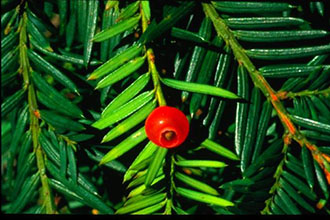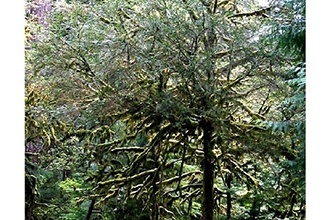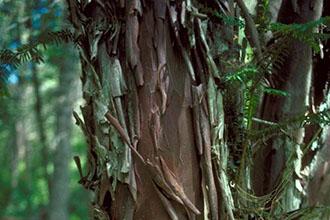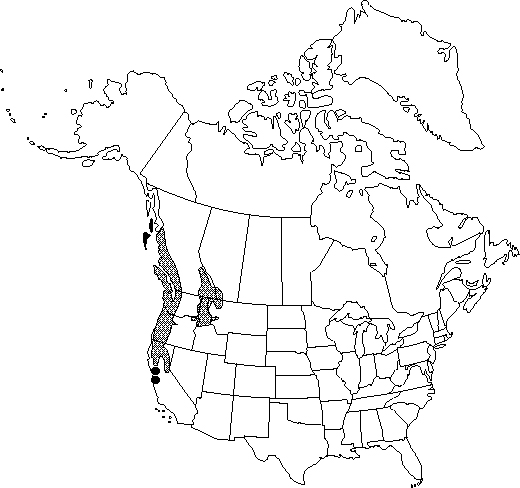Taxonomy: Kingdom - Plantae (plants). Subkingdom - Tracheobionta (vascular plants). Superdivision - Spermatophyta (seed plants). Division - Coniferophyta (conifers). Class - Pinopsida. Order - Taxales. Family - Taxaceae (yew). Genus - Taxus L. Species -Taxus brevifolia Nutt.
Ecology: Pacific yew is present in many climax or near climax communities of the Pacific Northwest and northern Rocky Mountains. It is a particularly common component of old-growth grand fir, western redcedar, and Douglas-fir-western hemlock communities. Pacific yew increases in cover up to a stand age of at least 500 years in northwestern old growth Douglas-fir forests which are characterized by long fire-free intervals. Pacific yew is very tolerant of shade. It appears to require shade for establishment and can grow and develop under heavy forest canopies. The bark of Pacific yew contains a drug, taxol, that is being used in cancer research, so demand for yew bark by the National Cancer Institute has increased dramatically in recent years.



